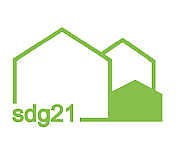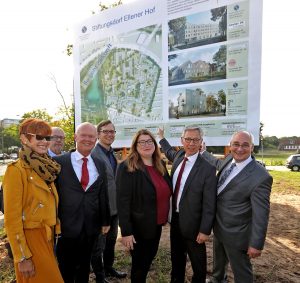 European Green Deal offers opportunities for investments in emissions-intensive basic industries - Clear political framework must ensure that investments are also economical and are triggered - Introduction of CO2 differential agreements and reform of EU emissions trading essential
European Green Deal offers opportunities for investments in emissions-intensive basic industries - Clear political framework must ensure that investments are also economical and are triggered - Introduction of CO2 differential agreements and reform of EU emissions trading essential
The climate-neutral transformation of industry will only succeed if it is profitable for companies. Researchers at the German Institute for Economic Research (DIW Berlin) have used the example of the emissions-intensive basic materials sector to work out what regulatory framework must be created to ensure that the transformation succeeds in a targeted manner. Effective CO2 prices are essential, which can be achieved by supplementing emissions trading with a climate contribution and CO2 differential agreements, for example. In addition, the announcement of a ban on the sale of CO2-intensive raw materials such as steel, cement or plastics would ensure that climate-neutral production processes are also implemented. In addition, the state must show its colours and define binding targets for the share of climate-neutral production in climate protection legislation.
"Economic stimulus packages to rebuild after the Corona crisis offer an opportunity to implement the European Green Deal," says Karsten Neuhoff, study author and head of the Climate Policy Department at DIW Berlin. "However, promoting investment alone is not enough. For companies to actually invest in climate-neutral technologies, clear regulatory frameworks are needed."
"Recovery packages to rebuild after the Corona crisis offer an opportunity to implement the European Green Deal" Karsten Neuhoff
Interaction of different instruments necessary
The DIW researchers cite a reform of the EU emissions trading system as a central issue, with the aim of ensuring that the CO2 costs of conventional raw material production are also reflected in the value chain. This could be achieved, for example, by means of a climate contribution - a levy that would be charged for every tonne of raw material produced or imported.
Accordingly, CO2 differential contracts are an additional effective instrument. They hedge investments in climate-friendly production and recycling processes against the risks of uncertain CO2 prices. "This secures investors a fixed revenue per tonne of CO2 saved and reduces risks and costs in financing," explains study author Jörn Richstein. "In this way, projects can be realized even at significantly lower CO2 prices." Comparable contracts for differences for renewable energies are also effective - they help to ensure that the energy-intensive basic industry can purchase clean electricity at competitive prices.
Ensure that industry implements climate neutral options
In addition, it must be ensured that industry actually implements climate-neutral options: According to study author Franziska Schütze, a sustainable financial system could contribute to this. "Stress tests that examine companies with a view to their climate neutrality would also be effective," says Schütze. In addition to bans on the sale of emissions-intensive raw materials, public tenders based on sustainable criteria would also be essential, as would better conditions for circular economy and recycling processes and the necessary infrastructure.
"A combination of these and other measures would help to achieve the green transformation and thus climate neutrality by 2050," concludes study author Olga Chiappinelli. "Now it's up to policymakers to also initiate these instruments to build confidence in the business community, and to set clear targets for their implementation." To ensure that the necessary measures are implemented in a timely and coordinated manner, targets for the share of CO2-neutral production must be anchored in the German Climate Protection Act and also at the European level.
Source: DIW PM of 11.3.2021
Keywords:
European Green Deal, Climate protection, News Blog Europe (without DE), Environmental policy




